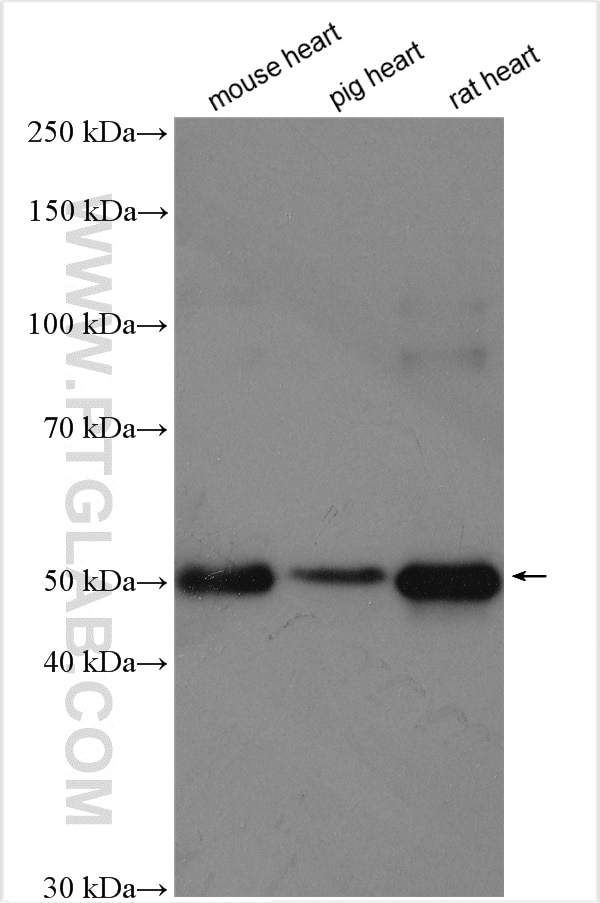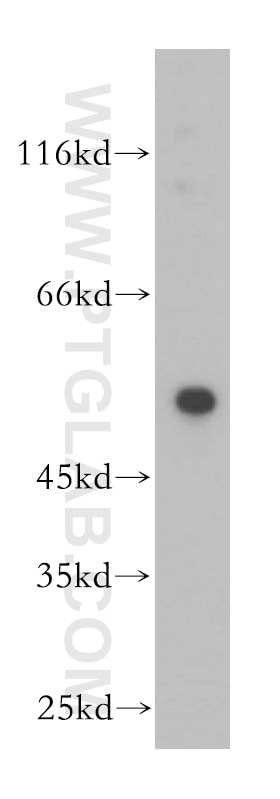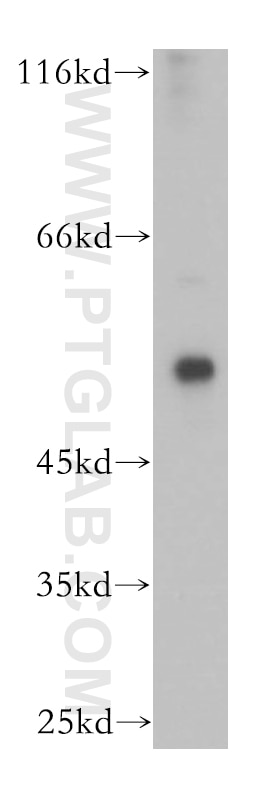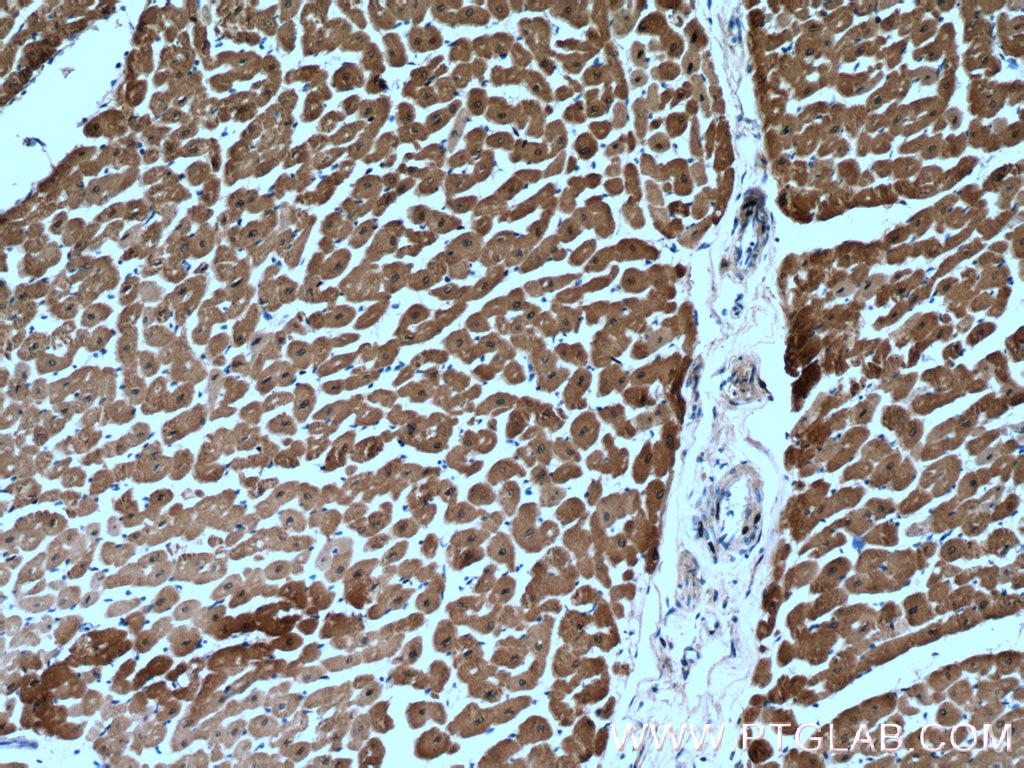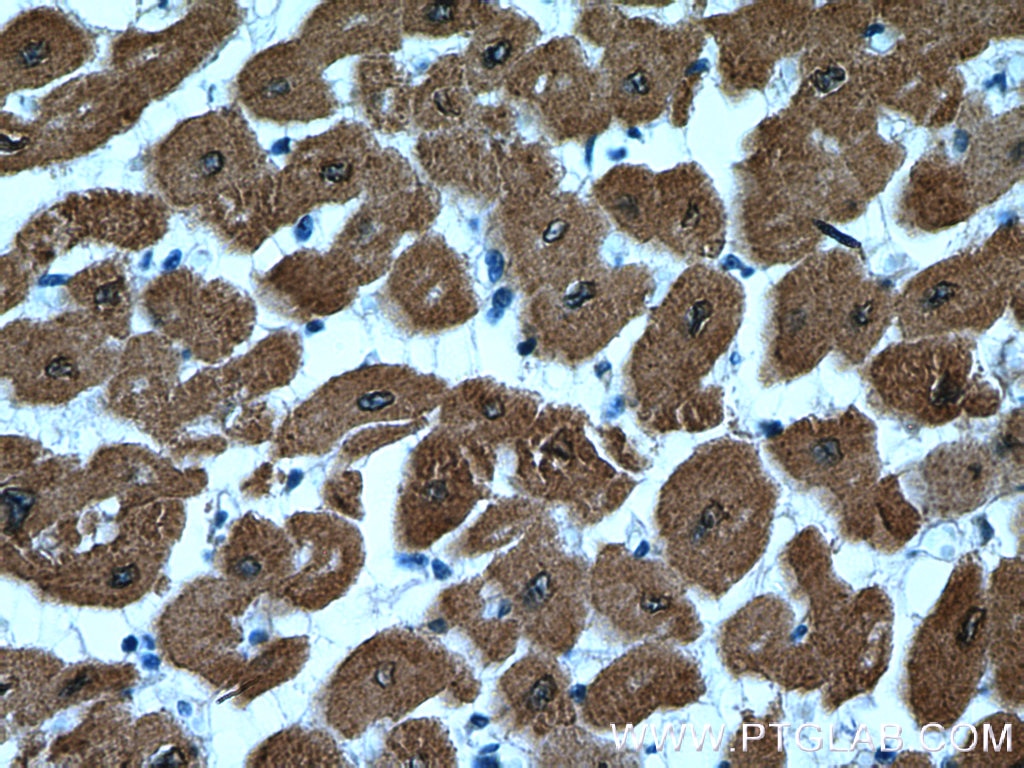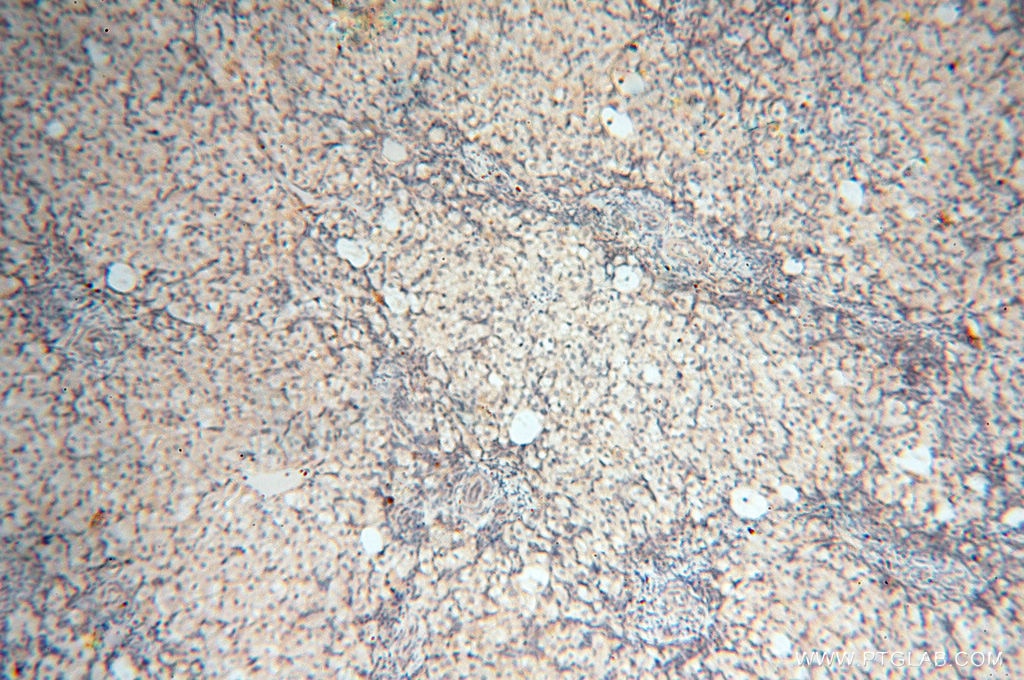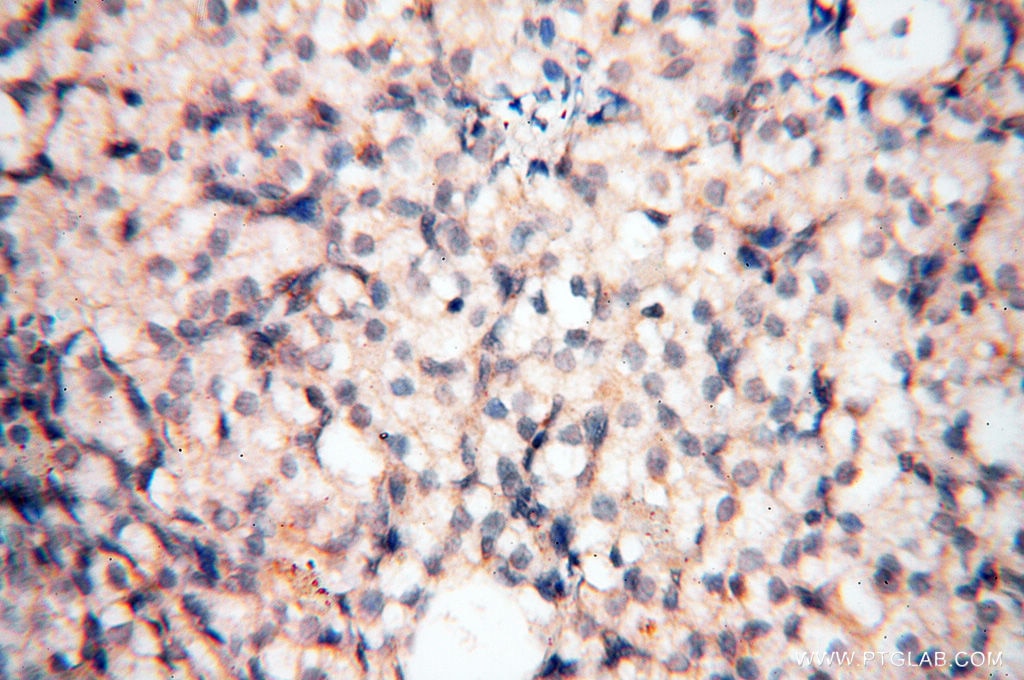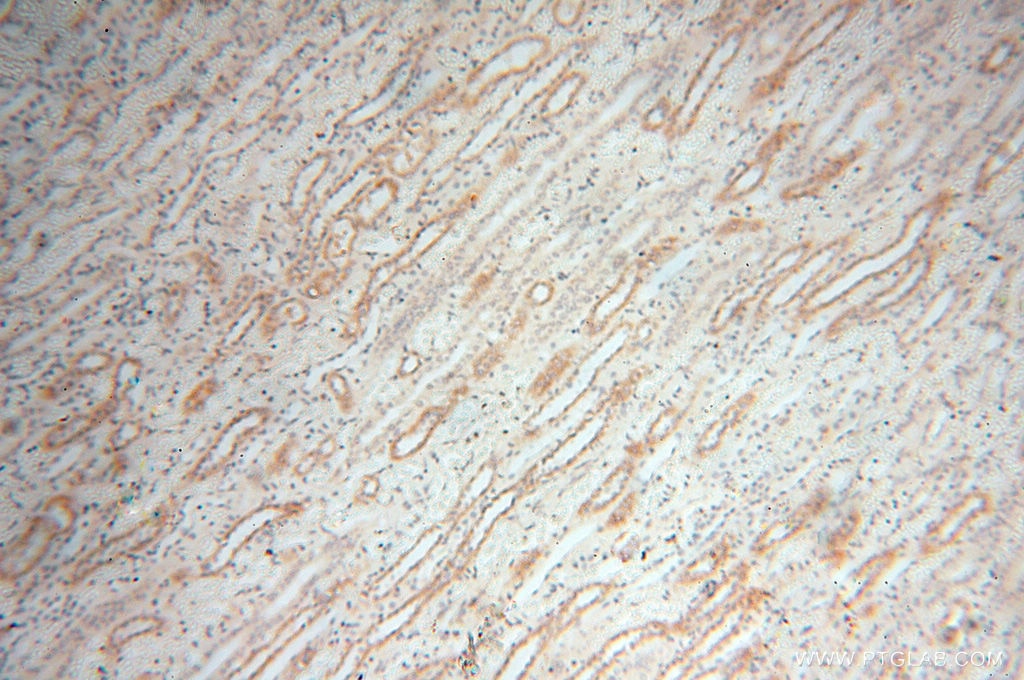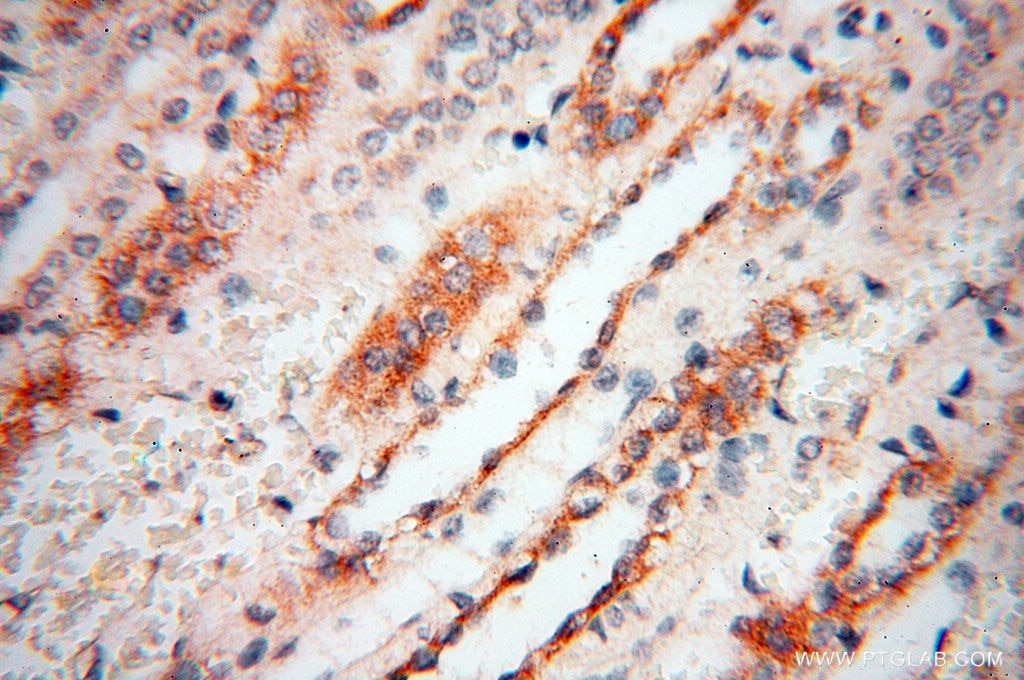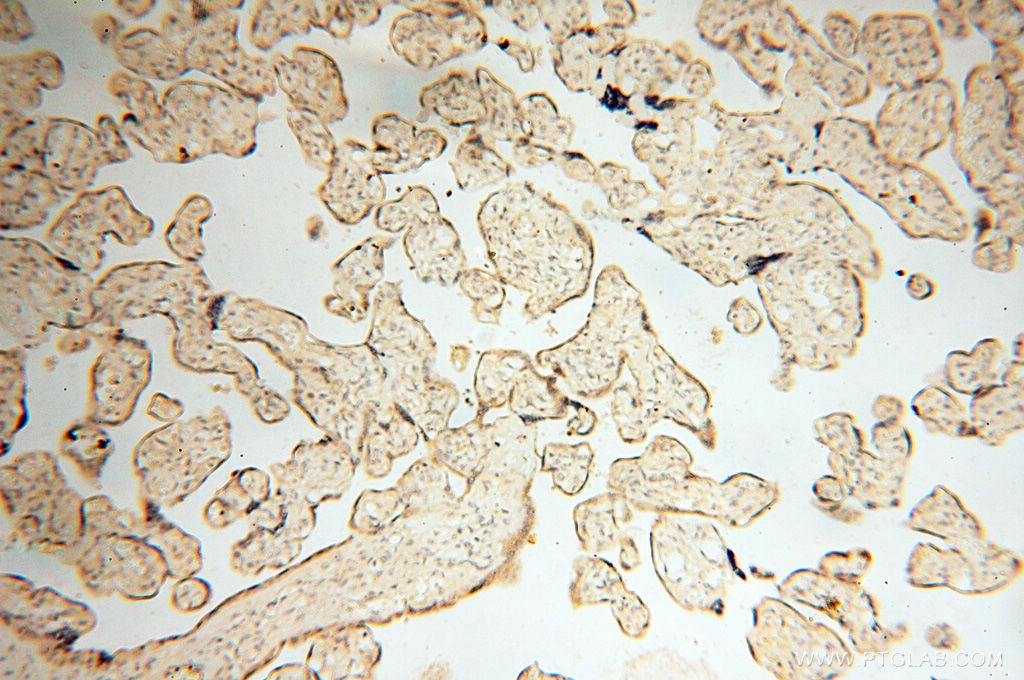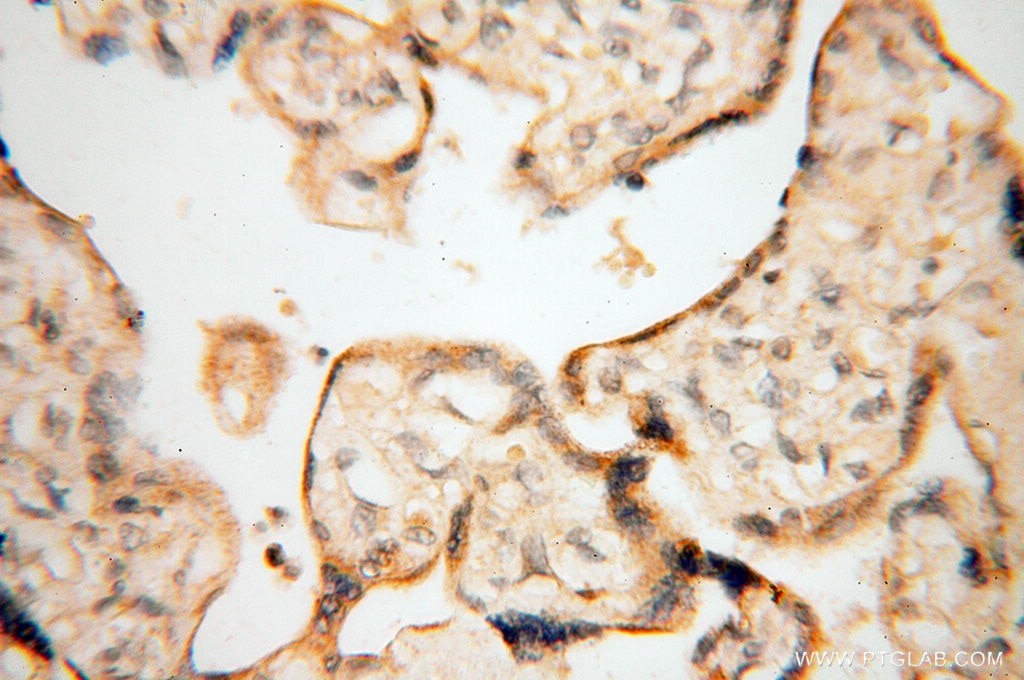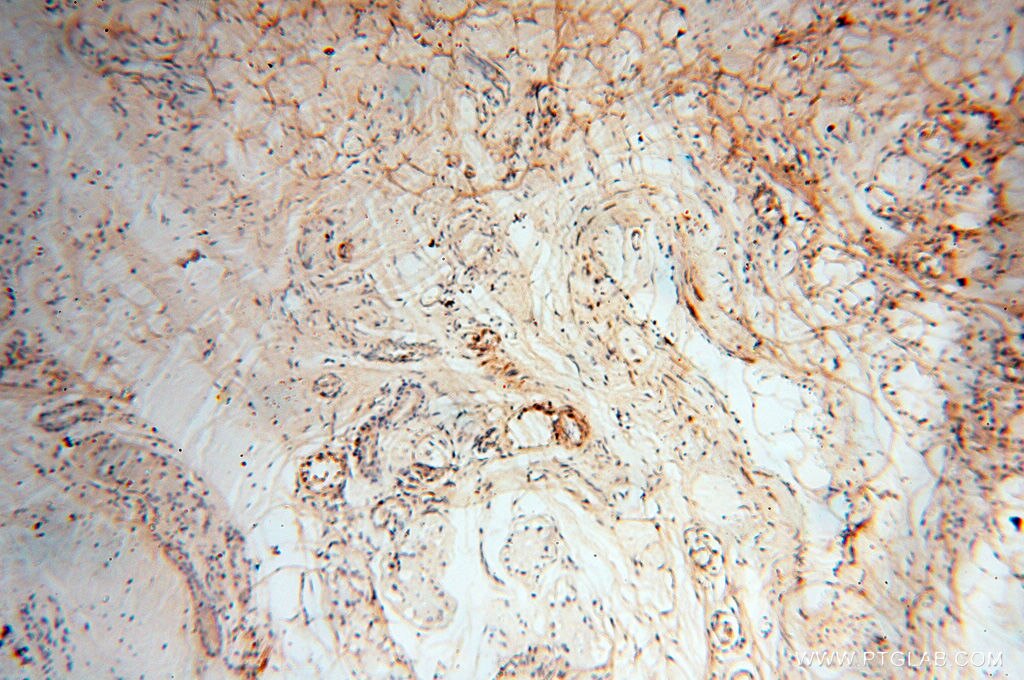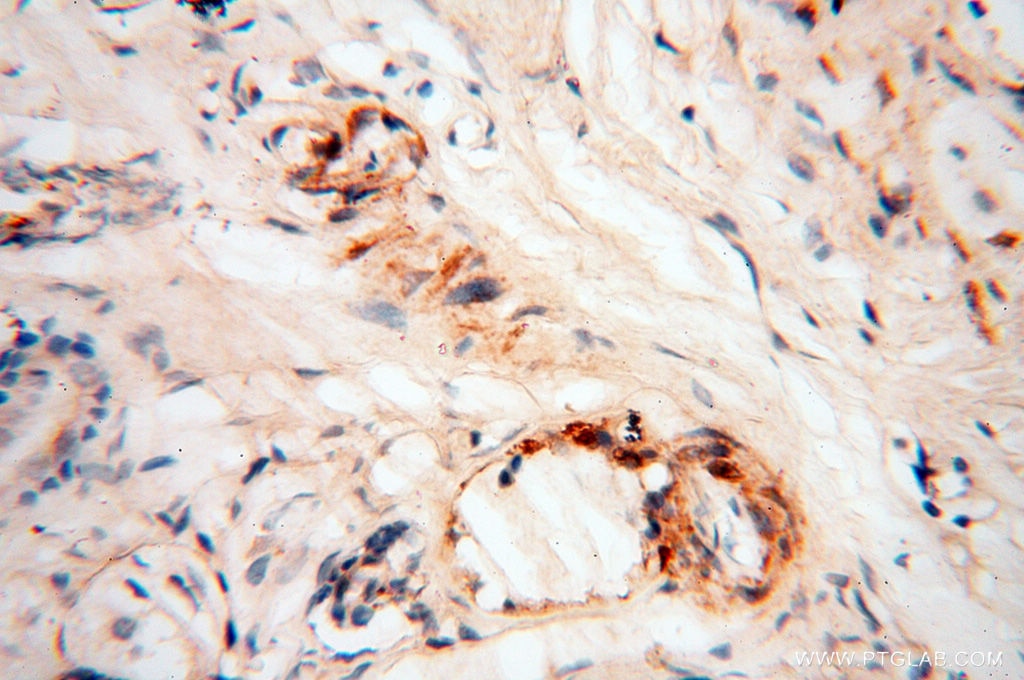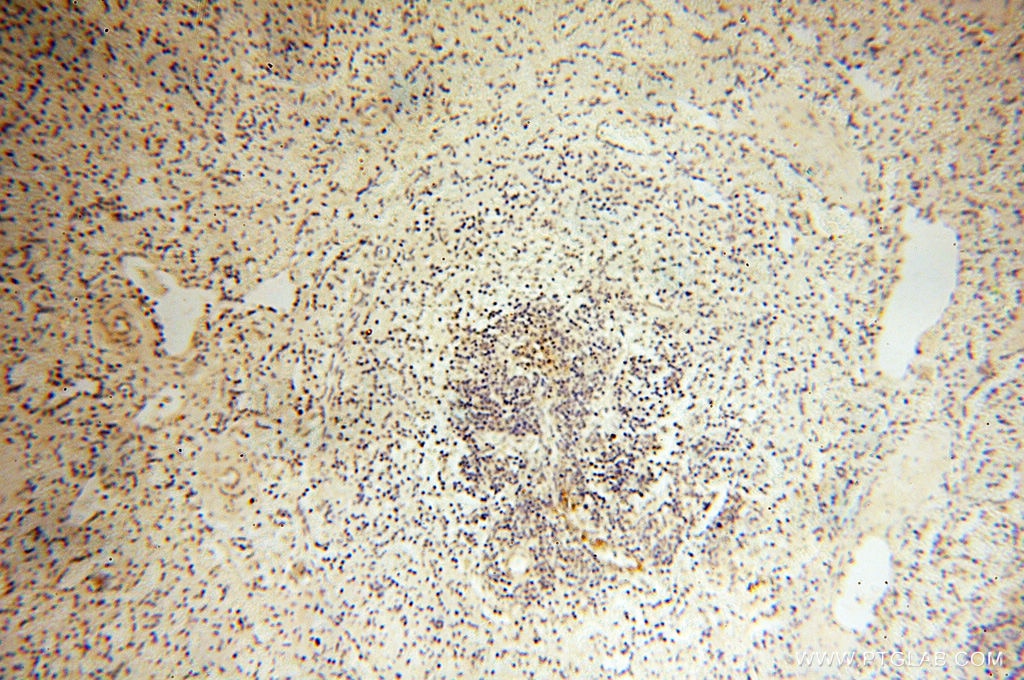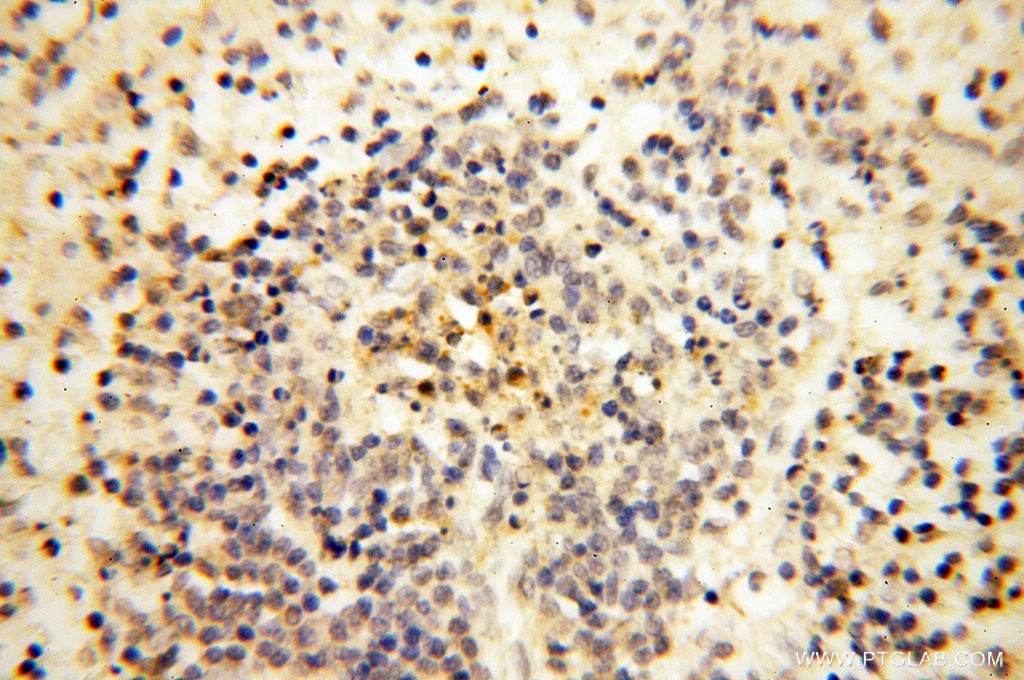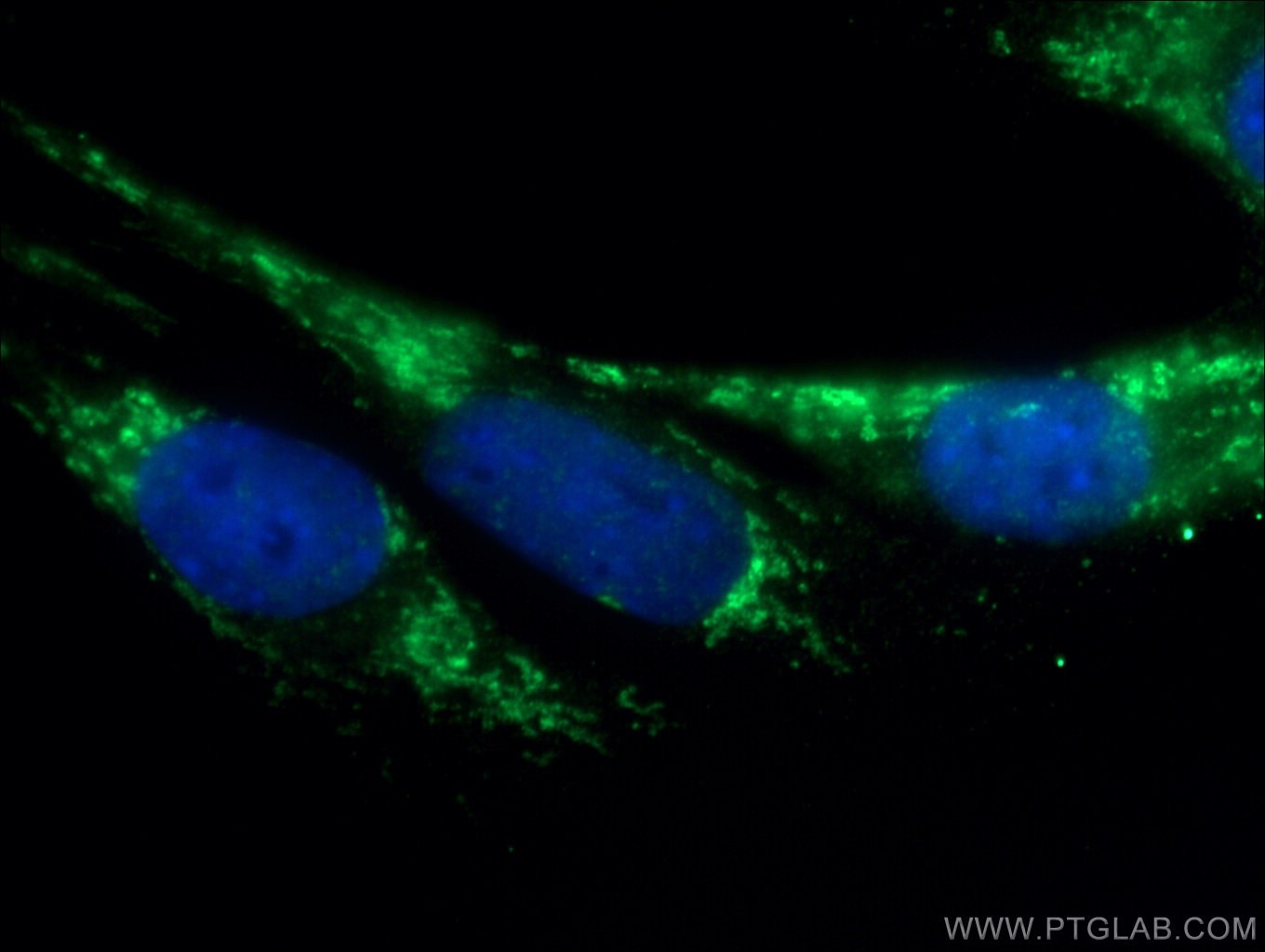- Phare
- Validé par KD/KO
Anticorps Polyclonal de lapin anti-Calsequestrin 2
Calsequestrin 2 Polyclonal Antibody for WB, IF, IHC, ELISA
Hôte / Isotype
Lapin / IgG
Réactivité testée
Humain, porc, rat, souris
Applications
WB, IHC, IF/ICC, ELISA
Conjugaison
Non conjugué
N° de cat : 18422-1-AP
Synonymes
Galerie de données de validation
Applications testées
| Résultats positifs en WB | tissu cardiaque de souris, tissu cardiaque de porc, tissu cardiaque de rat, tissu cardiaque humain, tissu de muscle squelettique humain |
| Résultats positifs en IHC | tissu cardiaque humain, tissu cutané humain, tissu ovarien humain, tissu placentaire humain, tissu rénal humain, tissu splénique humain il est suggéré de démasquer l'antigène avec un tampon de TE buffer pH 9.0; (*) À défaut, 'le démasquage de l'antigène peut être 'effectué avec un tampon citrate pH 6,0. |
| Résultats positifs en IF/ICC | cellule C2C12 |
Dilution recommandée
| Application | Dilution |
|---|---|
| Western Blot (WB) | WB : 1:2000-1:16000 |
| Immunohistochimie (IHC) | IHC : 1:50-1:500 |
| Immunofluorescence (IF)/ICC | IF/ICC : 1:50-1:500 |
| It is recommended that this reagent should be titrated in each testing system to obtain optimal results. | |
| Sample-dependent, check data in validation data gallery | |
Applications publiées
| KD/KO | See 2 publications below |
| WB | See 8 publications below |
| IHC | See 1 publications below |
| IF | See 2 publications below |
Informations sur le produit
18422-1-AP cible Calsequestrin 2 dans les applications de WB, IHC, IF/ICC, ELISA et montre une réactivité avec des échantillons Humain, porc, rat, souris
| Réactivité | Humain, porc, rat, souris |
| Réactivité citée | Humain, porc, souris |
| Hôte / Isotype | Lapin / IgG |
| Clonalité | Polyclonal |
| Type | Anticorps |
| Immunogène | Calsequestrin 2 Protéine recombinante Ag13246 |
| Nom complet | calsequestrin 2 (cardiac muscle) |
| Masse moléculaire calculée | 46 kDa |
| Poids moléculaire observé | 50 kDa |
| Numéro d’acquisition GenBank | BC022288 |
| Symbole du gène | Calsequestrin 2 |
| Identification du gène (NCBI) | 845 |
| Conjugaison | Non conjugué |
| Forme | Liquide |
| Méthode de purification | Purification par affinité contre l'antigène |
| Tampon de stockage | PBS avec azoture de sodium à 0,02 % et glycérol à 50 % pH 7,3 |
| Conditions de stockage | Stocker à -20°C. Stable pendant un an après l'expédition. L'aliquotage n'est pas nécessaire pour le stockage à -20oC Les 20ul contiennent 0,1% de BSA. |
Informations générales
Calsequestrin (CASQ) is a Ca2+-binding protein present primarily in junctional sarcoplasmic reticulum of skeletal and cardiac muscle; the cardiac form (CASQ2) is encoded by a separate gene. The primary role of CASQ2 is buffering of the sarcoplasmic reticulum Ca2+ ions, but another role for CASQ2 has emerged recently: CASQ2 regulates the open probability of ryanodine receptor 2 (RyR2). Mutations in CASQ2 cause stress-induced polymorphic ventricular tachycardia, also referred to as catecholaminergic polymorphic ventricular tachycardia 2 (CPVT2), a disease characterized by bidirectional ventricular tachycardia that may lead to cardiac arrest.
Protocole
| Product Specific Protocols | |
|---|---|
| WB protocol for Calsequestrin 2 antibody 18422-1-AP | Download protocol |
| IHC protocol for Calsequestrin 2 antibody 18422-1-AP | Download protocol |
| IF protocol for Calsequestrin 2 antibody 18422-1-AP | Download protocol |
| Standard Protocols | |
|---|---|
| Click here to view our Standard Protocols |
Publications
| Species | Application | Title |
|---|---|---|
EMBO Mol Med SK4 K(+) channels are therapeutic targets for the treatment of cardiac arrhythmias. | ||
JCI Insight The Purkinje-myocardial junction is the anatomical origin of ventricular arrhythmia in CPVT.
| ||
Heart Rhythm Viral delivered gene therapy to treat catecholaminergic polymorphic ventricular tachycardia (CPVT2) in mouse models.
| ||
Stem Cell Reports A Human Stem Cell Model of Fabry Disease Implicates LIMP-2 Accumulation in Cardiomyocyte Pathology. | ||
Mol Biol Cell Fer1l6 Is Essential for the Development of Vertebrate Muscle Tissue in Zebrafish. | ||
JCI Insight Critical role of Znhit1 for postnatal heart function and vacuolar cardiomyopathy. |
